From its romantic ruins to a working harbour
The quaint coastal town of Whitby in North Yorkshire is an absolute delight to discover and serves as a perfect base to explore the surrounding moors and coastline. Whether you’re visiting Whitby for a mini-break or sightseeing for the day, Whitby has something enjoyable for everyone.
Immerse yourself in Whitby’s nautical history through the tales of Captain Cook, let loose your inner Goth and visit during Whitby’s Goth Weekend and amble through the winding cobbled lanes up to the enchanting Whitby Abbey.
Our visit to Whitby was part of our Yorkshire EV road trip. Before heading to Whitby, we visited the beautiful Cathedral city of York.
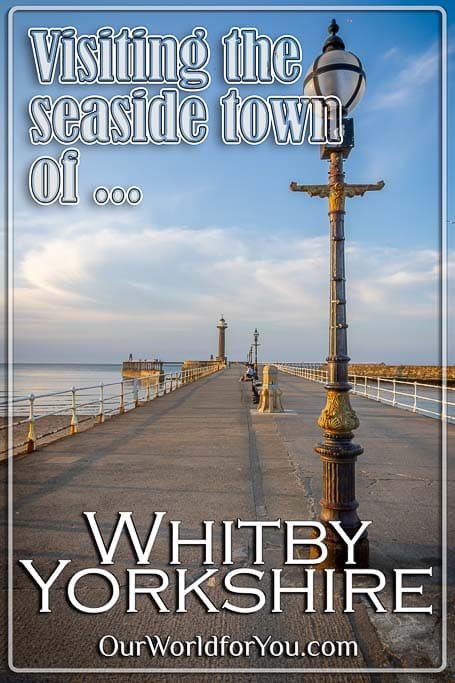
Where is Whitby?
How to get to Whitby
- By Train
Use a Network Rail station (via Middlesbrough) on the scenic Esk Valley Railway. Or from Pickering by steam (sometimes diesel) train on the North Yorkshire Moors Railway.
- By Coach
You can travel to Whitby via National Express coaches, which offers a direct service from Leeds and York.
- By Car
If you’re approaching from the South, take the A64 from York to Malton, then the A169 via Pickering. From the North, take the A19 to Middlesbrough, then the A171 via Guisborough.
- By Air
The closest airports to Whitby are Leeds/Bradford Airport and Newcastle Airport. From here, select your preferred hire car company from Rental Cars.
Escape for a few days
Are you in search of a tranquil hideaway to relax and unwind in, while you discover the beautiful British countryside?
Browse through the handpicked properties and unique retreats at Holiday Cottages.
A brief history of Whitby
An explorer, an Abbey, and a Maritime past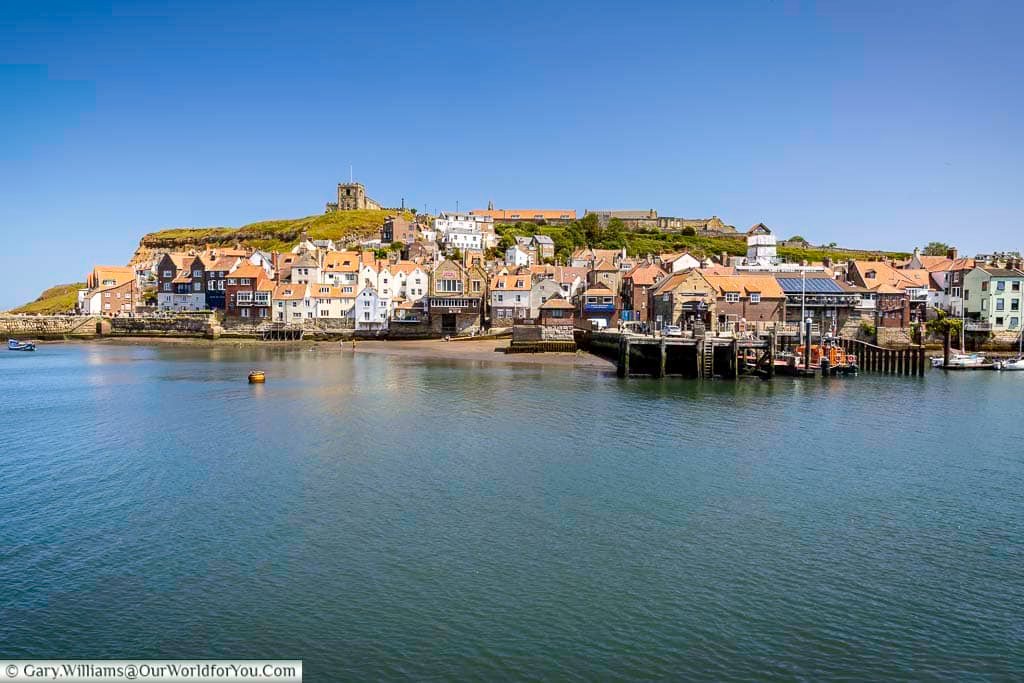

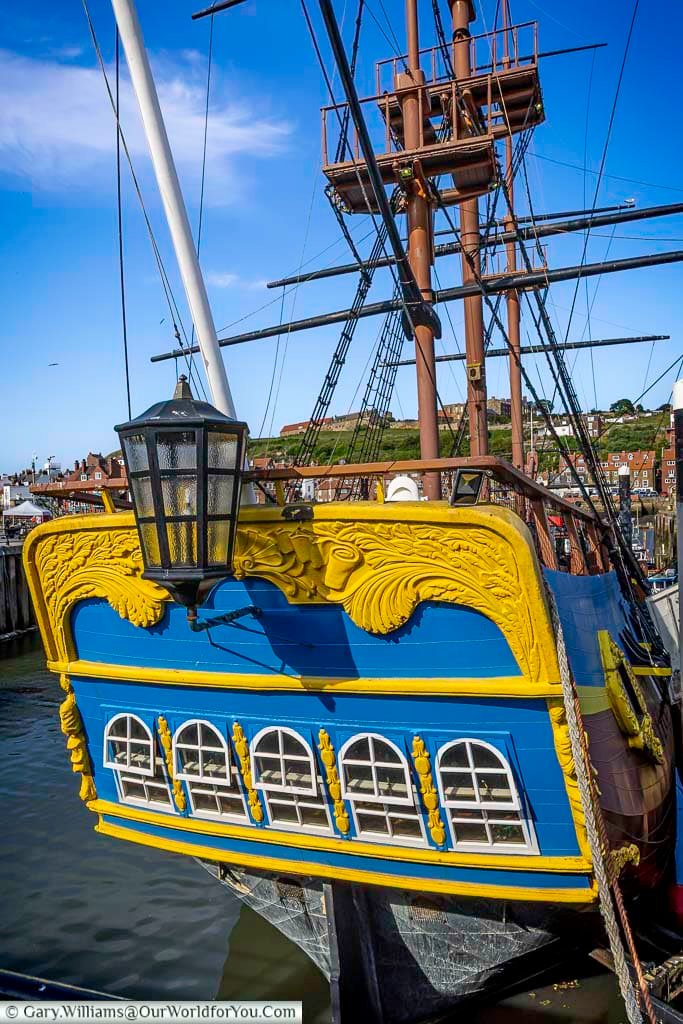
During the 11th century, Whitby fishing village began to thrive, and by the Middle Ages, Whitby had become a small but busy port. Whitby built up significant herring and whaling fleets, and the 18th century marked Whitby’s golden maritime age, and it became the third largest shipbuilder in England.
Most famously, Captain James Cook, who went on to chart much of the Pacific, served his apprenticeship here under a local shipowner named John Walker. His first command, the HMS Endeavour, was built in Whitby.
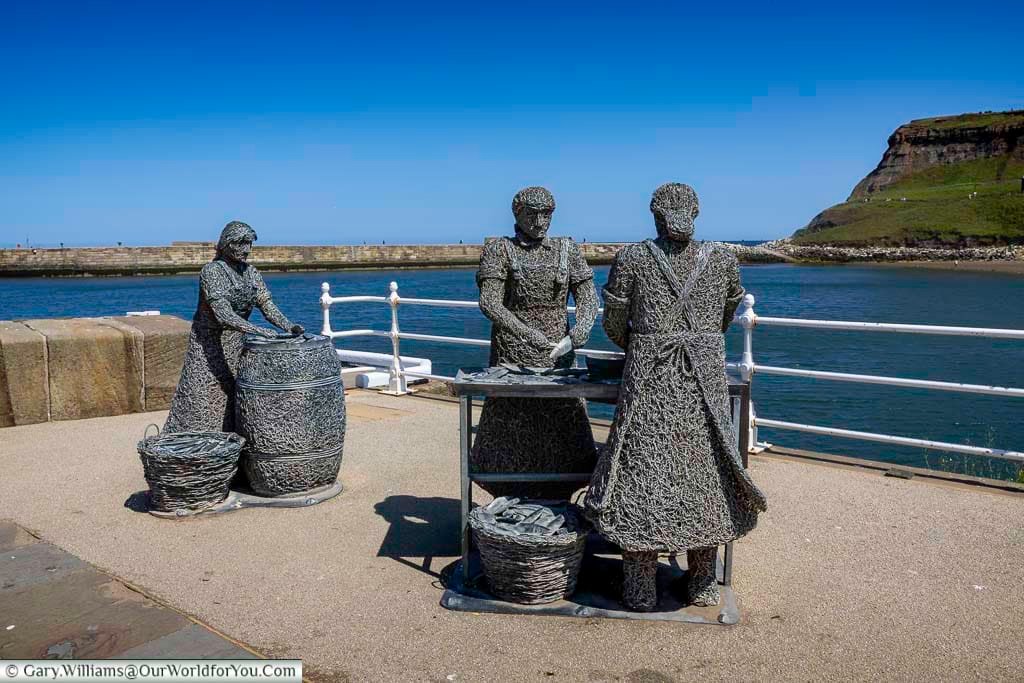
The arrival of the Victorian railway in 1839 transformed Whitby again, ushering in the Victorian era of tourism. Visitors from industrial towns came for sea air, Gothic architecture, and dramatic coastal scenery.
It was during this time that Bram Stoker, visiting in the 1890s, found inspiration for his novel Dracula. The haunting image of the vampire’s shipwreck at Whitby and the abbey ruins looming above the town immortalised Whitby in Gothic literature.
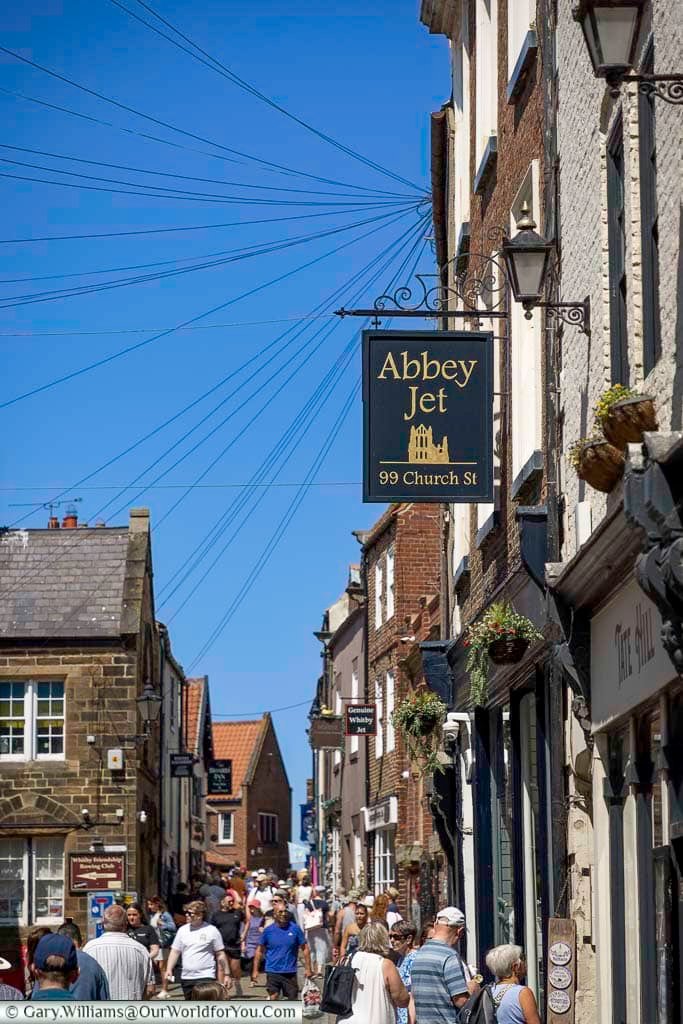
Stay informed
Strolling the cobbled streets of Whitby
In the footsteps of historyWhitby is a delightful seaside town to explore, from its quaint cobbled lanes to its kiss-me-quick slapstick charm.
Whitby’s historic streets are among the most atmospheric and charismatic in all of Yorkshire. Its narrow, twisting passageways appear to hold centuries of seafaring stories, folklore, and architectural allure.
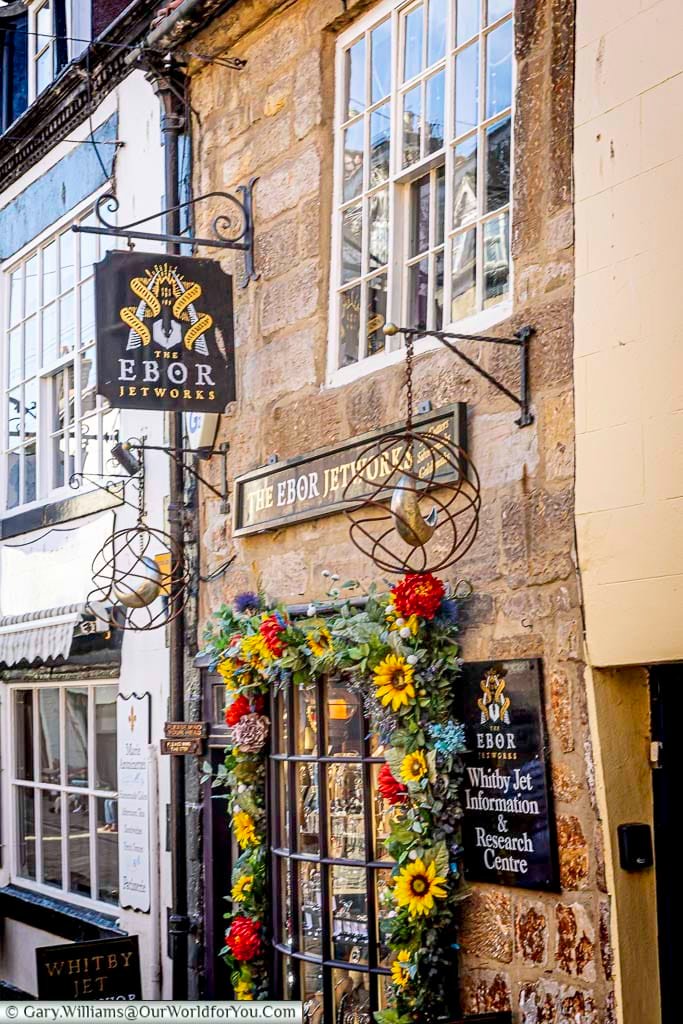
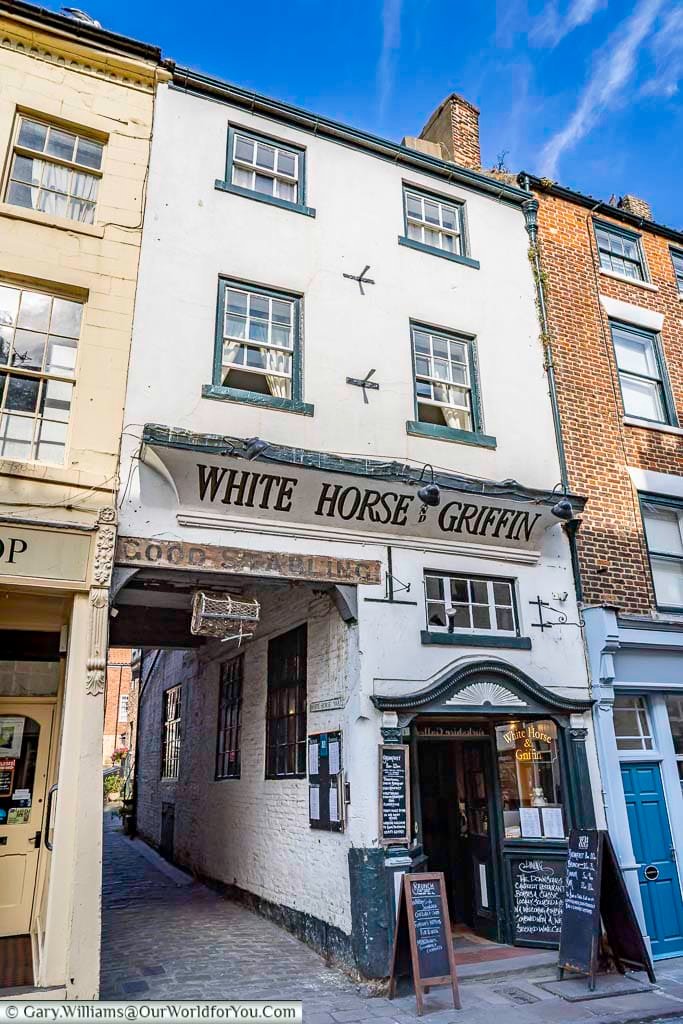
The oldest and most well-known street in Whitby is Church Street, which runs along the East Side of the town. From the swing bridge, it’s lined with quirky independent shops, tearooms, and heritage buildings. Many of these were once fishermen’s cottages, chandlers, and rope-makers.
The medieval street pattern of Whitby is fascinating, especially on the East Side of the River Esk, which has changed little since they were developed in the 12th and 13th centuries. The lanes climb steeply up from the picturesque harbour toward the 199 steps, known as the Church Stairs, which lead up to St. Mary’s Church and Whitby Abbey.
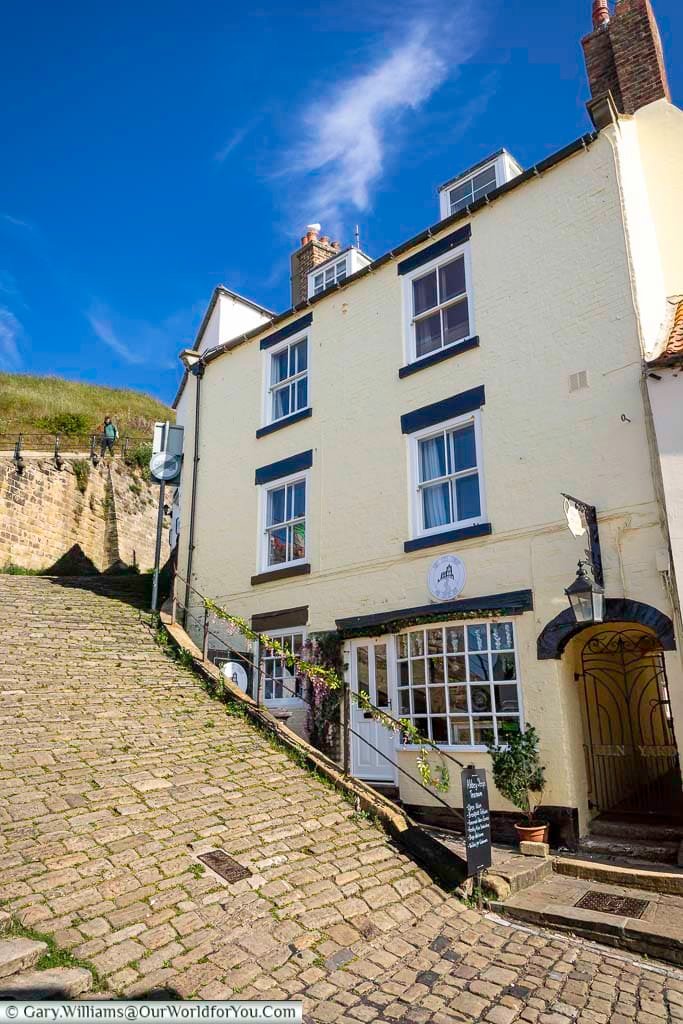
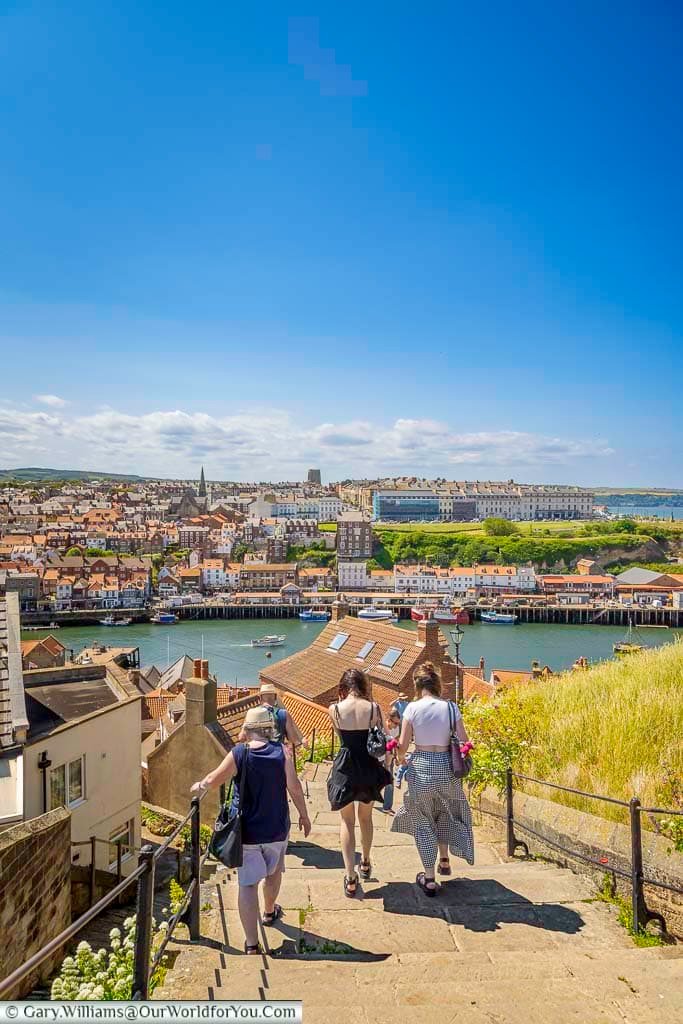
These streets were once home to fishermen, sailors, and jet carvers, the lifeblood of Whitby’s maritime economy.
The tangle of cobbled lanes and courtyards was built tightly together for protection from the sea winds. Many houses still feature 17th and 18th century brick or stone façades, which overhang on the upper stories.
Where to stay in Whitby
This traditional clifftop hotel overlooks the North Sea with stunning views across to Whitby Abbey. It’s around a 10-minute walk down to Whitby’s historic harbour and offers a warm, friendly atmosphere.
EV charging points are available in their on-site parking.
Whitby Tourist Information
Discovering Whitby Abbey
A grand dame on England’s northeast coast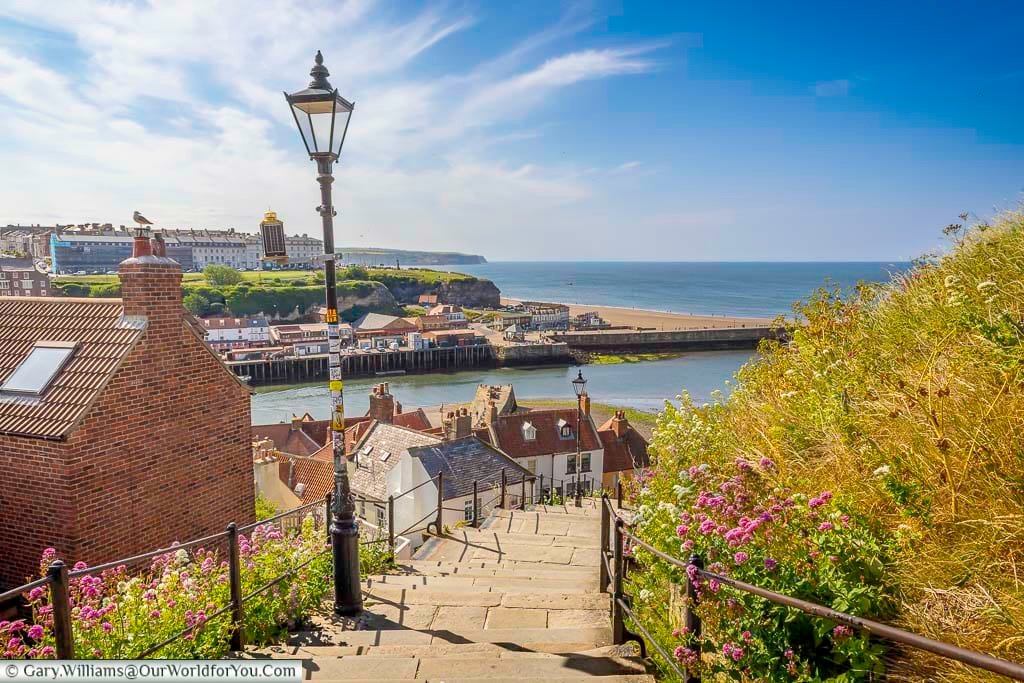
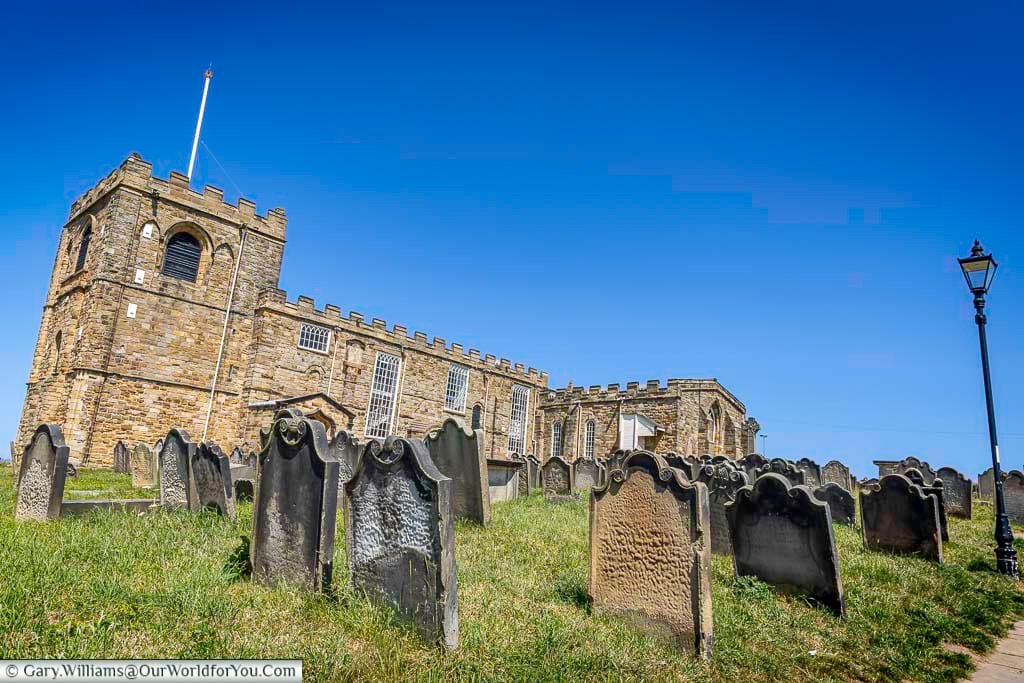

Whitby Abbey is perched high on the East Cliff overlooking the North Sea. Whitby Abbey was originally founded in AD 657 by King Oswy of Northumbria as a double monastery, housing both monks and nuns who were under the rule of Abbess Hild. The abbey became a major centre of learning and spirituality in Anglo-Saxon England.
It was here in 664 AD that the Synod of Whitby was held, a historic meeting that decided how the English Church would date Easter, aligning it with Roman Christian rather than Celtic practices. This decision helped unify English Christianity under Rome’s influence.
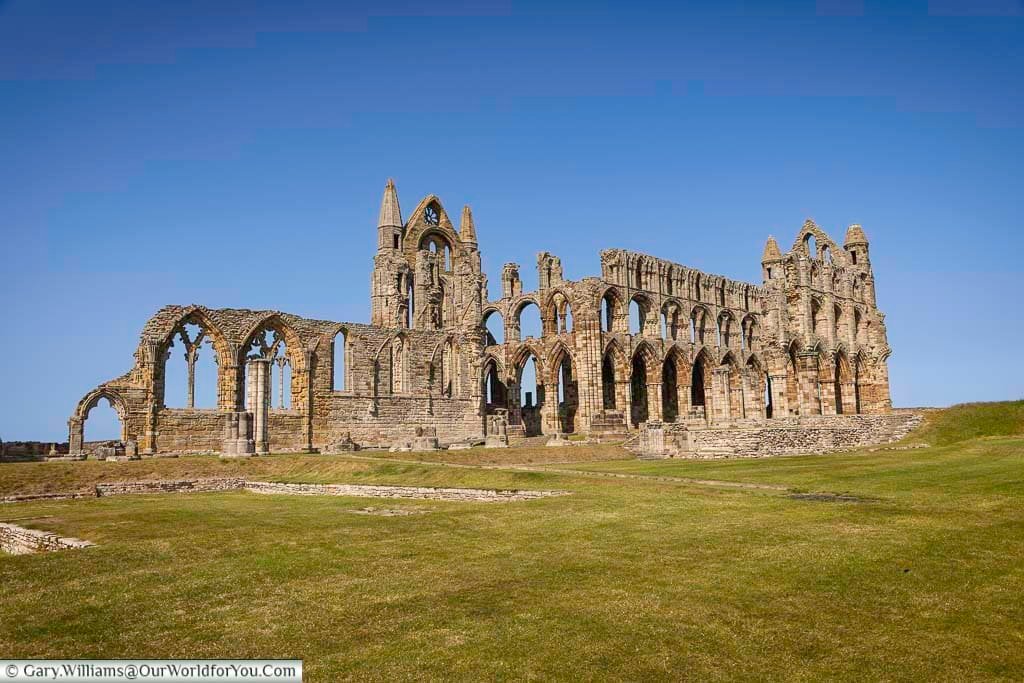
The abbey was destroyed by Danish Viking raids in the 9th century; however, it was later refounded in 1078 by Reinfrid, a Benedictine monk. The magnificent Gothic abbey church whose ruins you see today dates from the 13th century.
Like many monastic buildings, Whitby Abbey was dissolved by Henry VIII in 1539; its lands were sold, and its roof stripped for materials. The ruins remain as a romantic symbol of the past, battered by time, storms, and even German naval shellfire during World War I.


Exploring Whitby harbour
History meets nostalgia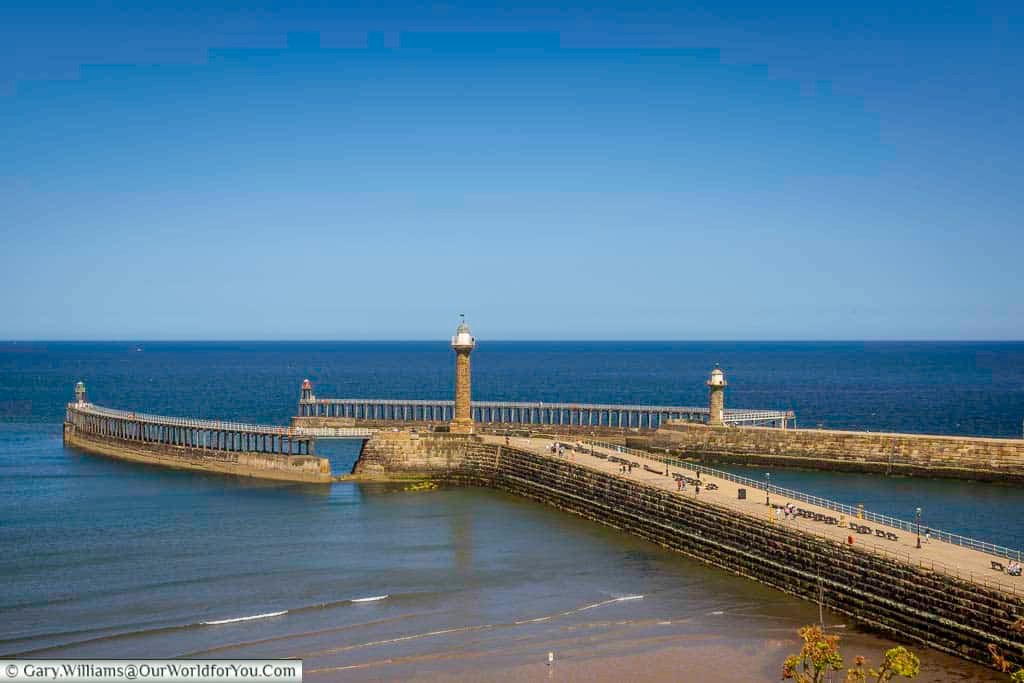
Whitby harbour is divided by the River Esk into the old town on the east and the newer west side, linked by a swing bridge that opens to let fishing boats and leisure craft pass through.
Wander along the quayside and you’ll find working trawlers moored beside pleasure boats, colourful crab pots stacked high, and the smell of fresh fish and chips drifting through the salty air. As mentioned, the old East Side, offers cobbled lanes, quaint shops and views back across to the bustling marina.
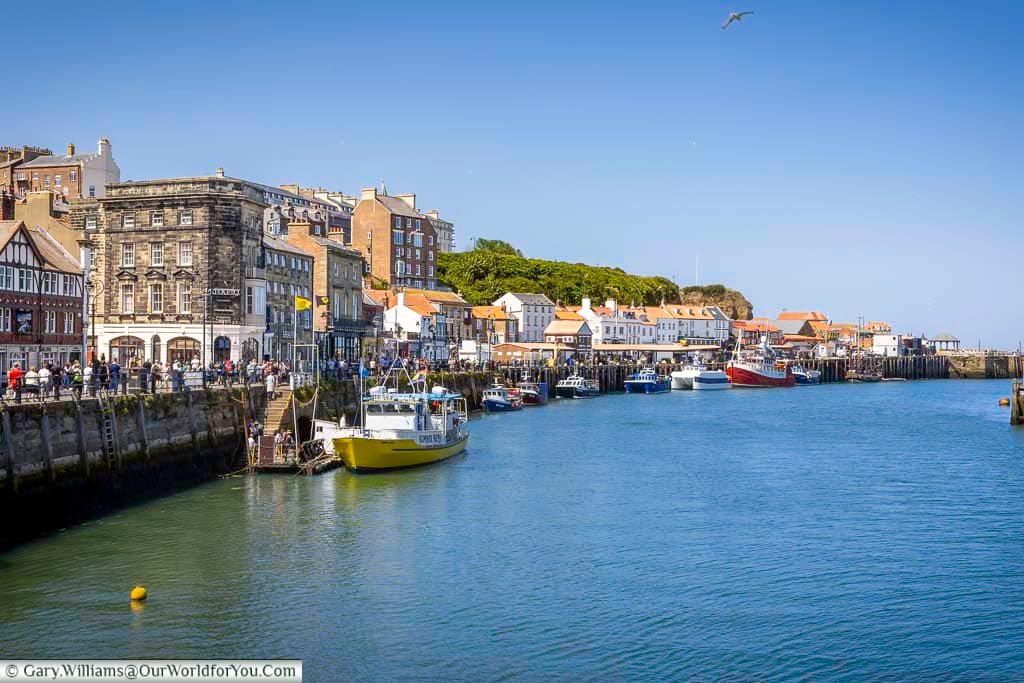
The west side of the harbour is home to Whitby’s family fun arcades, the famous Magpie Café, the RNLI Whitby Museum and the replica of HMS Endeavour.
As the tide rises and falls, Whitby Harbour takes on different moods, tranquil and reflective at dawn, alive with activity through the day, and golden at sunset when the light catches the water, and the abbey silhouette glows above.
Climbing the West Cliff
Views across to Whitby AbbeyYou can’t miss the climb to the top of West Cliff; not only will you enjoy the breathtaking views across to East Cliff and Whitby Abbey, but you’ll also find Captain Cook’s grand statue.
As mentioned, Captain James Cook was a British explorer, navigator, and cartographer. As a young man, Cook first apprenticed in the fishing village of Staithes, but quickly moved on to a maritime apprenticeship in Whitby, where he flourished.
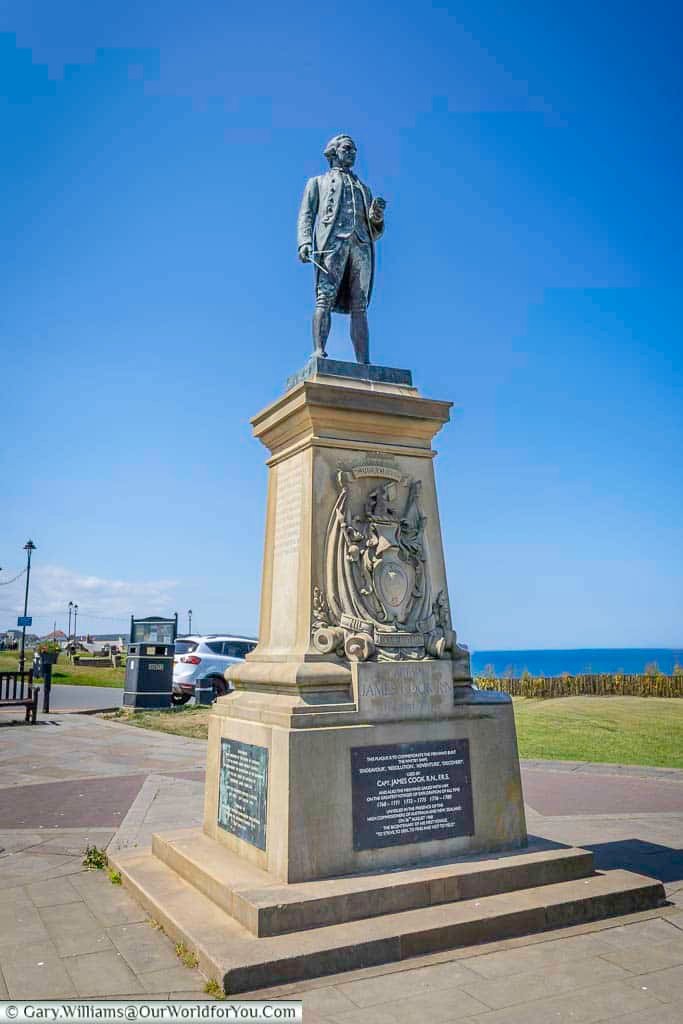
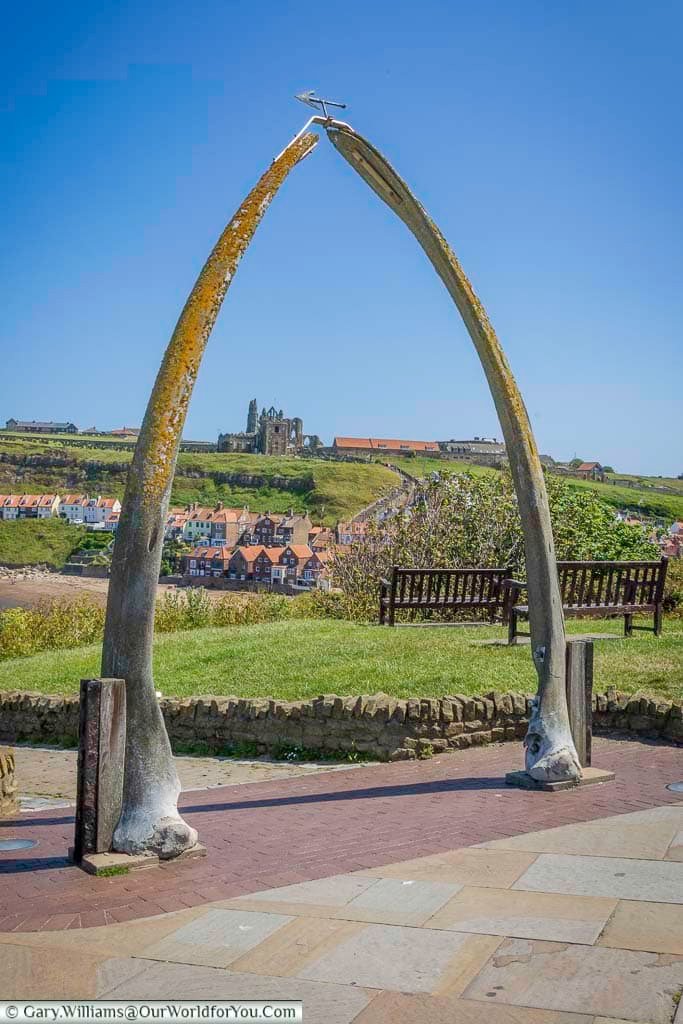
We have a new little book on our shelves that we delve into when we're heading to the coast.
Packed full of historical facts, and broken down into the different counties of England. It tells tales of the history of the shoreline that surrounds our country.
Available in Kindle & Hardback editions, it's an excellent addition to anyone's collection who loves the English seaside.
* This post may contain links to affiliated sites where we earn a small commission at no additional charge to you.

